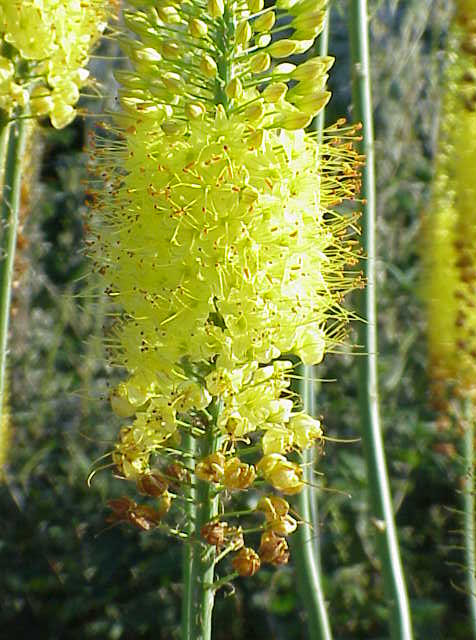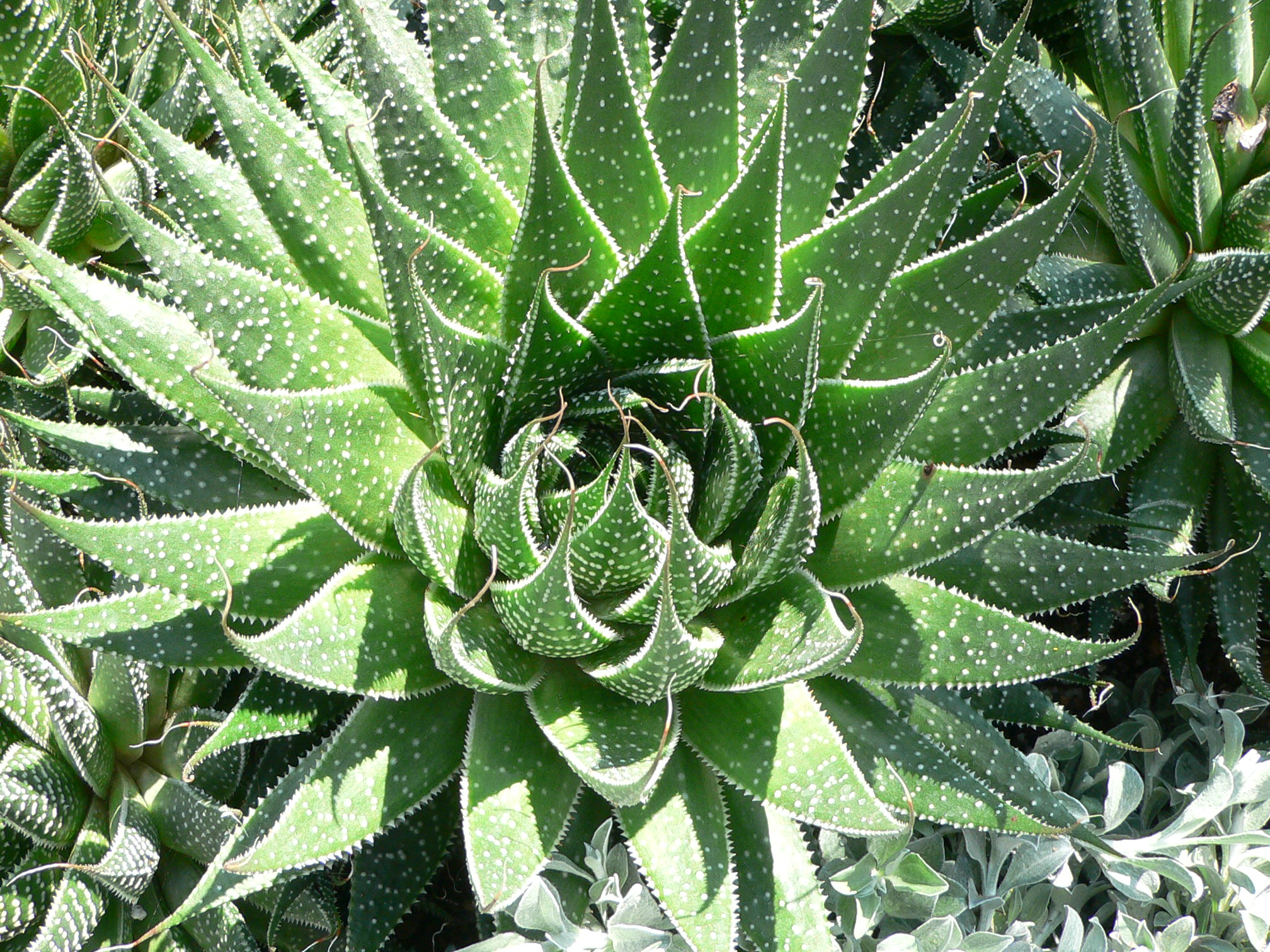|
Asphodeloideae
Asphodeloideae is a subfamily of the monocot family Asphodelaceae in the order Asparagales. It has previously been treated as a separate family, Asphodelaceae ''sensu stricto''. The family Asphodelaceae has now been proposed to be a nomen conservandum, and the proposal has been recommended for ratification in 2017. In that case, Asphodelaceae will have priority over Xanthorrhoeaceae. This is reflected in the APG IV family lists. The subfamily name is derived from the generic name of the type genus, ''Asphodelus''. Members of this group can be found growing native in coastal Southern Africa, Central and Western Europe, the Mediterranean basin, Central Asia and Australia; one genus, '' Bulbinella'', can additionally be found growing in New Zealand. The greatest diversity occurs in South Africa. Several genera, notably ''Aloe'', ''Asphodelus'', ''Gasteria'', ''Haworthia'' and '' Kniphofia'' are perhaps the best known of the family due to their use among plant collectors, botanis ... [...More Info...] [...Related Items...] OR: [Wikipedia] [Google] [Baidu] |
Asphodelaceae
Asphodelaceae is a family of flowering plants in the order Asparagales. Such a family has been recognized by most taxonomists, but the circumscription has varied widely. In its current circumscription in the APG IV system, it includes about 40 genera and 900 known species. The type genus is '' Asphodelus''. The family has a wide, but scattered, distribution throughout the tropics and temperate zones; for example, ''Xanthorrhoea'' is endemic to Australia, while the '' Aloes'' are unique to Africa and parts of the Arabian Peninsula. Many of the family's genera are cultivated as ornamentals, with some being highly collectible and sought-after, such as ''Haworthia'' and '' Gasteria'', as well as their intergeneric hybrids with ''Aloe'' ('' x Gasteraloe'', x ''Gastorthia'', x ''Haworthaloe'', etc.), while a few are grown commercially for cut flowers. Two species of ''Aloe'', '' A. vera'' and '' A. maculata'', are grown for their leaf sap, which contains digestive enzymes, an ... [...More Info...] [...Related Items...] OR: [Wikipedia] [Google] [Baidu] |
Haworthia
''Haworthia'' is a large genus of small succulent plants endemic to Southern Africa (Mozambique, Namibia, Lesotho, Eswatini and South Africa). Like aloes and gasteria they are members of the Family (biology), subfamily Asphodeloideae and they generally resemble miniature aloes, except in their flowers, which are distinctive in appearance. They are popular garden and container plants. These plants were discovered by Henri Auguste Duval (1777-1814) in 1809. The genus name is derived from Adrian Hardy Haworth, Adrian Hardy Haworth’s (1767-1833) name, a botanist and avid succulent collector. Description and characteristics ''Haworthias'' are small succulent plants, forming rosettes of leaves from to exceptionally in diameter, depending on the species. These rosettes are usually stemless but in some species stems reach up to . The inflorescences of some species may exceed in height. The plants can grow solitary or can be clump-forming. Many species have firm, tough, fleshy l ... [...More Info...] [...Related Items...] OR: [Wikipedia] [Google] [Baidu] |
Asparagales
Asparagales (asparagoid lilies) are a diverse order of flowering plants in the monocots. Under the APG IV system of flowering plant classification, Asparagales are the largest order of monocots with 14 families, 1,122 genera, and about 36,000 species, with members as varied as asparagus, orchids, yuccas, irises, onions, garlic, leeks, and other Alliums, daffodils, snowdrops, amaryllis, agaves, butcher's broom, Agapanthus, Solomon's seal, hyacinths, bluebells, spider plants, grasstrees, aloe, freesias, gladioli, crocuses, and saffron. Most species of Asparagales are herbaceous perennials, although some are climbers and some are trees or shrubs. The order also contains many geophytes (bulbs, corms, and various kinds of tuber). The leaves of almost all species form a tight rosette, either at the base of the plant or at the end of the stem, but occasionally along the stem. The flowers are not particularly distinctive, being 'lily type', with six tepals and ... [...More Info...] [...Related Items...] OR: [Wikipedia] [Google] [Baidu] |
Bulbinella
''Bulbinella'' is a genus of plants in the family Asphodelaceae, subfamily Asphodeloideae,Stevens, P.F. (2001 onwards)"Asphodeloideae" ''Angiosperm Phylogeny Website''. Retrieved 2016-06-10. first described as a genus in 1843. Many species are endemic to Cape Province in western South Africa, confined to the winter rainfall area. Other species are endemic to New Zealand, where they are most common in the central Otago region which enjoys a similar climate to the Cape Region of South Africa.Germishuizen, G. & Meyer, N.L. (eds.) (2003). Plants of Southern Africa: an annotated checklist. Strelitzia 14.: i-vi, 1-1231. National Botanical Institute, Pretoria. Description They are characterised by the presence of a dense terminal raceme of flowers, often yellow but also white, pink, yellow or orange depending on the species. Each flower occurs in the axil of a bract and has 1 nerved perianth segments that are almost free. Each flower has 6 stamens. The seeds are characteristically shie ... [...More Info...] [...Related Items...] OR: [Wikipedia] [Google] [Baidu] |
Gasteria
''Gasteria'' is a genus of succulent plants, native to South Africa and the far south-west corner of Namibia. Naming The genus is named for its stomach-shaped flowers (''"gaster"'' is Greek for "stomach") that result from the swollen base on the corolla. Common names include ''ox-tongue'', ''cow-tongue'', ''lawyer's tongue'' and, occasionally, ''mother-in-law's tongue''. Description Gasterias are recognisable from their thick, hard, succulent "tongue-shaped" leaves. These are either in two opposite ranks (distichous), or in various distinctive spiral arrangements. Their inflorescence is also unique, with their curved, stomach-shaped flowers, which hang from inclined racemes. Distribution The species of this genus are mostly native to the Eastern Cape Province, South Africa, where the bulk of the species occur – especially in the small area between Makhanda and Uniondale which enjoys rainfall throughout the year. However, the distribution of several species extends widely ... [...More Info...] [...Related Items...] OR: [Wikipedia] [Google] [Baidu] |
Aloe
''Aloe'' (; also written ''Aloë'') is a genus containing over 650 species of flowering plant, flowering succulent plant, succulent plants.WFO (2022): Aloe L. Published on the Internet;http://www.worldfloraonline.org/taxon/wfo-4000001341. Accessed on: 06 Nov 2022 The most widely known species is ''Aloe vera'', or "true aloe". It is called this because it is cultivated as the standard source for assorted pharmaceutical purposes. Other species, such as ''Aloe ferox'', are also cultivated or harvested from the wild for similar applications. The APG IV system (2016) places the genus in the family Asphodelaceae, subfamily Asphodeloideae. Within the subfamily it may be placed in the tribe Aloeae.Stevens, P.F. (2001 onwards).Asphodelaceae. ''Angiosperm Phylogeny Website''. Retrieved 2016-06-09. In the past, it has been assigned to the family Aloaceae (now included in the Asphodeloidae) or to a broadly Circumscription (taxonomy), circumscribed family Liliaceae (the lily family). The ... [...More Info...] [...Related Items...] OR: [Wikipedia] [Google] [Baidu] |
Asphodeline Lutea
''Asphodeline lutea'' (king's spear, yellow asphodel) is a perennial plant native to southeastern Europe, northern Africa, the Caucasus and the Levant. It is grown as a landscaping plant. It has been associated with the Asphodel of the Greek underworld, Ancient Greek underworld, but so has the closely related ''Asphodelus ramosus''. Description ''Asphodeline lutea'' reaches tall and wide. The grey-green leaves are tall, with the flower stalk growing bearing a dense raceme of bright yellow flowers. History ''Asphodeline lutea'' was introduced into the University of Oxford Botanic Garden in 1648, even though it demonstrated no known uses that are typical of a physic garden (plants grown for medicinal use). One of the curators of the garden at the time, John Parkinson (botanist), John Parkinson, said the plant was "not... used in Physicke for any purpose." The locals in the Mediterranean who were interviewed by Parkinson said that that plant had "no... propertie appropriat ... [...More Info...] [...Related Items...] OR: [Wikipedia] [Google] [Baidu] |
Eremurus Stenophyllus0
''Eremurus'' is a genus of deciduous perennial flowers in the family Asphodelaceae. They are also known as the foxtail lilies or desert candles. They are native to eastern Europe in (Russia and Ukraine), and temperate Asia from Turkey to China, with many species in Central Asia. The inflorescence consists of a tall floral spike whose individual flowers extend their anthers around the stem axis as in the bottle brushes. Depending on the species, the spike consists of many densely-arranged, small flowers in shades of orange, yellow, white, pale pink or red-orange. The grey-green, straplike leaves grow in a tuft from the succulent root crown. Eremurus is known for its thick, fingerlike roots, which grow from a central growth point. The blooming spike is notably tall and relatively narrow, rising from 3 to 9 or 10 feet above the foliage, depending on the species. These plants are mainly native to western and Central Asia, although ''Eremurus thiodanthus'' is endemic to the Crimea. ... [...More Info...] [...Related Items...] OR: [Wikipedia] [Google] [Baidu] |
Aristaloe
''Aristaloe'' is a genus of evergreen flowering perennial plants in the family Asphodelaceae from Southern Africa. Its sole species is ''Aristaloe aristata'', known as guinea-fowl aloe or lace aloe. Naming and taxonomy This species is known locally as "serelei" (Sesotho for "slippery one") or "langnaaldaalwyn" (Afrikaans for "lacey aloe"). In English it is usually known as the "lace aloe" or "guinea-fowl aloe". The species was described by Adrian Hardy Haworth. Its species name ''"aristata"'' comes from the Latin for "bristly" or " awned", and refers to the lacy edges of the leaves. Its generic name has the same etymology. Recent phylogenetic In biology, phylogenetics () is the study of the evolutionary history of life using observable characteristics of organisms (or genes), which is known as phylogenetic inference. It infers the relationship among organisms based on empirical dat ... studies have demonstrated that the genus ''Aloe'' is Polyphyly, polyphyletic and that th ... [...More Info...] [...Related Items...] OR: [Wikipedia] [Google] [Baidu] |




